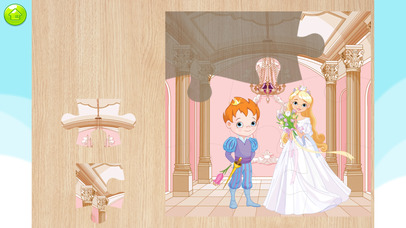
Puzzles for Kids Royal Princess
Your girls love puzzles? This game brings amazing scenes, cute illustrations with many effects and sounds. Royal Princess: Kids Puzzles is a fun, interactive, engaging and educational puzzle to entertain and educate your toddler! This puzzle game is carefully designed for small children.
When kids finish a puzzle, they are rewarded with a variety of surprises. This fun matching game helps improve visual perception & develop fine motor skills by dragging and dropping puzzle pieces to match their silhouettes.
Multiple difficulty levels to keep your toddler engaged, choose between three jigsaw sizes.
Spend quality time with your child and help him learn to place puzzle pieces and improve his motor skills.
Features:
* Princesses and fairies memory game
* Cute cartoon illustrations - mermaids, princesses, knight, horse, fairy
* Different difficulties - 4 to 16 pieces per puzzle
* Different puzzle types
* Easy to use for toddlers and kids
* All puzzles are free
* Family Ads
* Safe hold to activate buttons
* Designed for 1 to 5 year old kids
* Pop balloons, water bubbles, eggs, fruits and many more after each level
Bonus MEMORY GAME with princesses and fairies! Benefits:
* Did you know that memory games increase toddler’s concentration if played regularly?
* Memory games improve kids brain power
* Memory games keep your childs brain active all the time
Why Puzzles are so Important for Kids Learning?
* Cognitive skills - Psychologists say that a child’s brain development is influenced significantly when a child acts on or manipulates the world around him or her. Puzzles provide that key opportunity.
* Fine Motor Skills - Fine motor skills require small, specialized movements that puzzles provide.
* Memory - Simple jigsaws and other types of puzzles may help enhance a child’s memory. For example, a child will need to recall the size, color and shape of various pieces as he or she works through the puzzle. If a piece doesn’t fit, the child sets it aside; but he or she will need to remember that piece when it is needed.


